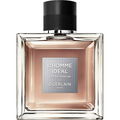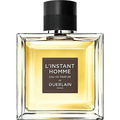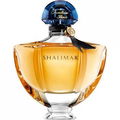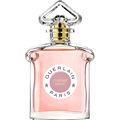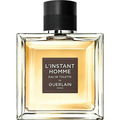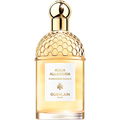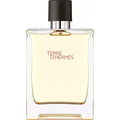07/14/2012

jtd
484 Reviews

jtd
Very helpful Review
7
Vetiver Abstraction
[Note: The Vetiver referred to below is the horizontal(ish) striped frosted glass bottle. The ‘90s’ bottle. ]
Guerlain avoided the Vetiver Trap and chose to make the vetiver root conform to perfumery, not vice versa. Vetiver is a demanding note, and some of the producers of vetiver perfumes of the past 20 years have elected to make it the heart and soul of their perfumes. While there are so many obvious angles of vetiver to emphasize (woody, rootlike, oily, smoky, earthen) they are so imposing that using vetiver in any sufficient quantity in a composition pushes everything else out of its way. A byproduct of the primacy of a note is the same conceptual problem as the solifor in perfumery: why create a representation of vetiver in a perfume when we could wear vetiver essential oil itself?
To focus on a tobacco note seems an obvious way to fall into this trap and wind up with a musty, earthy density. But Guerlain’s Vetiver uses a tart grapefruity bergamot along with licorice and what (I swear to god) seems like aldehydes to make the tobacco bloom, giving Vetiver an effervescent upper register. The real trick is that from the top through the basenotes Vetiver has a dry gin-like almost hissy pervasiveness that is far more durable that this range of notes typically is. The cool quality doesn’t actually feel mentholated or camphorous, but rather sheer and glassy, suggesting that it is cool to the touch.
Coolness seems to have become pronounced over the various reformulations. I know that many are saddened by reformulation. I seem to remember the Guerlain Vetiver a French friend wore in the late 80s and early 90s focused more on the dense, oily vetiver note itself. I know the lightening of a fragrance as a result of reformulation is generally panned, but this cooler, more gin-like Vetiver 1) gives me a wonderful sense of sang-froid in my warm climate and, 2) lifts the register of the tobacco note, making it effectively floral. The lightening doesn’t have to do with dilution, but an increased emphasis on the tenor range of notes.
Prettier than it was, and still pitch-perfect, I find the current Vetiver de Guerlain more appealing than ever, and exceptionally successful in its manipulation of a difficult botanical note. The current Vetiver, more than earlier versions, uses its eponymous note in the same manner that Chanel No 5 makes a floral perfume with jasmine: it makes a balanced abstraction that smells of vetiver but does not smell like vetiver.
(I’ve been wearing reformulated Guerlain Vetiver in the old-is-new-again rectangular bottle with the silver cap. My overview of it is that it’s nicely made, smells more like the ‘original’ and smells more like vetiver root but less like tobacco and aldehydes. I prefer my ‘90s’ Vetiver for its abstraction, but I might be in the minority. My only strike against the new is that it fades rather quickly, something I don’t remember any previous version doing.)
Guerlain avoided the Vetiver Trap and chose to make the vetiver root conform to perfumery, not vice versa. Vetiver is a demanding note, and some of the producers of vetiver perfumes of the past 20 years have elected to make it the heart and soul of their perfumes. While there are so many obvious angles of vetiver to emphasize (woody, rootlike, oily, smoky, earthen) they are so imposing that using vetiver in any sufficient quantity in a composition pushes everything else out of its way. A byproduct of the primacy of a note is the same conceptual problem as the solifor in perfumery: why create a representation of vetiver in a perfume when we could wear vetiver essential oil itself?
To focus on a tobacco note seems an obvious way to fall into this trap and wind up with a musty, earthy density. But Guerlain’s Vetiver uses a tart grapefruity bergamot along with licorice and what (I swear to god) seems like aldehydes to make the tobacco bloom, giving Vetiver an effervescent upper register. The real trick is that from the top through the basenotes Vetiver has a dry gin-like almost hissy pervasiveness that is far more durable that this range of notes typically is. The cool quality doesn’t actually feel mentholated or camphorous, but rather sheer and glassy, suggesting that it is cool to the touch.
Coolness seems to have become pronounced over the various reformulations. I know that many are saddened by reformulation. I seem to remember the Guerlain Vetiver a French friend wore in the late 80s and early 90s focused more on the dense, oily vetiver note itself. I know the lightening of a fragrance as a result of reformulation is generally panned, but this cooler, more gin-like Vetiver 1) gives me a wonderful sense of sang-froid in my warm climate and, 2) lifts the register of the tobacco note, making it effectively floral. The lightening doesn’t have to do with dilution, but an increased emphasis on the tenor range of notes.
Prettier than it was, and still pitch-perfect, I find the current Vetiver de Guerlain more appealing than ever, and exceptionally successful in its manipulation of a difficult botanical note. The current Vetiver, more than earlier versions, uses its eponymous note in the same manner that Chanel No 5 makes a floral perfume with jasmine: it makes a balanced abstraction that smells of vetiver but does not smell like vetiver.
(I’ve been wearing reformulated Guerlain Vetiver in the old-is-new-again rectangular bottle with the silver cap. My overview of it is that it’s nicely made, smells more like the ‘original’ and smells more like vetiver root but less like tobacco and aldehydes. I prefer my ‘90s’ Vetiver for its abstraction, but I might be in the minority. My only strike against the new is that it fades rather quickly, something I don’t remember any previous version doing.)











 Top Notes
Top Notes  Bergamot
Bergamot Lemon
Lemon Orange
Orange Heart Notes
Heart Notes  Nutmeg
Nutmeg Pepper
Pepper Base Notes
Base Notes  Vetiver
Vetiver Tobacco
Tobacco Tonka bean
Tonka bean
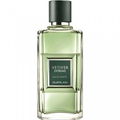



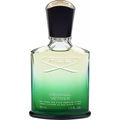
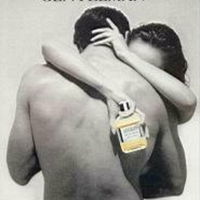







 HugoMontez
HugoMontez Elysium
Elysium DAVID043329
DAVID043329 JoaoMartins
JoaoMartins BertolucciK
BertolucciK Shafkat82
Shafkat82 GRG
GRG Ravona
Ravona Agegshdhd
Agegshdhd MrHonest
MrHonest